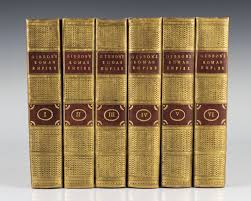 Two things related to food which I suspect readers are going to enjoy (though perhaps not on an empty stomach!):
Two things related to food which I suspect readers are going to enjoy (though perhaps not on an empty stomach!):
– A Bengali Meal: 16th century
Check them out!
 Two things related to food which I suspect readers are going to enjoy (though perhaps not on an empty stomach!):
Two things related to food which I suspect readers are going to enjoy (though perhaps not on an empty stomach!):
– A Bengali Meal: 16th century
Check them out!
This is a post I was writing a few months back but had abandoned midway. It is in response to what Razib had argued in one of his posts. According to Razib while an Aryan Migration model, that suggests an entry of Indo-Aryans into South Asia, might not have textual and archaeological support, when looked at in a wider context, that necessitates explaining the origin and migration of all Indo-Europeans from a PIE homeland to their respective places of present or last known (e.g. Hittites & Tocharian) inhabitation, the steppe theory makes a far more compelling case as PIE homeland than an OIT.
Admittedly, we haven’t had a major attempt being made in the academia, Western or Indian, which tries to take stock of all available evidence, linguistic and archaeological, and uses that evidence to argue for the PIE origins in South Asia and the subsequent dispersals of the daughter languages to their known destinations.
It is beyond the remit of my present subject to ponder why this has been so but we may note that an elegant and solid linguistic case (1,2) for a spread of IE languages from a locus in the region of Bactria has been already made more than two decades back by Johanna Nichols. However, the linguistic community has chosen to sideline her work without a proper rebuttal.
Continue reading Iran_N/CHG Ancestry and the Genetic Origins of the Proto-Indo-Europeans
From Dr Hamid Hussain
Book Review – The Boats of Cherbourg by Abraham Rabinovich
Hamid Hussain
![The Boats of Cherbourg: The Navy That Stole Its Own Boats and Revolutionized Naval Warfare by [Abraham Rabinovich]](https://m.media-amazon.com/images/I/51+hoAbMxGL.jpg)
A well respected Israeli military historian Abraham Rabinovich’ s book is a fascinating account of a little known chapter of naval history. Israeli air force and armored corps were ruling the roost as these two services played key role in June 1967 stunning victory against three Arab armies. Israeli navy was relegated to the back seat as no one saw any meaningful role for this service. The lion’s share of defense budget was allocated to air force and army. Israeli navy needed a cheaper option to fulfill its operational role. Continue reading Book Review: The Boats of Cherbourg
 I did an episode on Big Brown Army a few days ago. The conversation revolved around being Christian (evangelical) and Indian, as well as what wokeness is doing to Christianity and Indians. The host of BBA, Decruz, is someone who I’ve known on and off for 15 years. We’ve both changed a lot, but stayed fundamentally similar.
I did an episode on Big Brown Army a few days ago. The conversation revolved around being Christian (evangelical) and Indian, as well as what wokeness is doing to Christianity and Indians. The host of BBA, Decruz, is someone who I’ve known on and off for 15 years. We’ve both changed a lot, but stayed fundamentally similar.
Please remember to subscribe to ABCD Politics, the new podcast that I am doing with Surya Yalamanchilli.
I’m surprised how much you guys can be invested in Kashmir! That being said, the blow-up of the comments every week indicates perhaps Twitter is no longer so fun? I mean, 300+ comments on open threads are some serious discussion. Are blogs coming back?
What’s the best history of India you guys have read? I know some people will get mad, but Romilla Thapar’s stuff is some of the most accessible and well-written in English. Tell me what’s better.
The South Asian subcontinent is characterized by a complex history of human migrations and population interactions. In this study, we used genome-wide data to provide novel insights on the demographic history and population relationships of six Indo-European populations from the Indian State of West Maharashtra. The samples correspond to two castes (Deshastha Brahmins and Kunbi Marathas) and four tribal groups (Kokana, Warli, Bhil and Pawara). We show that tribal groups have had much smaller effective population sizes than castes, and that genetic drift has had a higher impact in tribal populations. We also show clear affinities between the Bhil and Pawara tribes, and to a lesser extent, between the Warli and Kokana tribes. Our comparisons with available modern and ancient DNA datasets from South Asia indicate that the Brahmin caste has higher Ancient Iranian and Steppe pastoralist contributions than the Kunbi Marathas caste. Additionally, in contrast to the two castes, tribal groups have very high Ancient Ancestral South Indian (AASI) contributions. Indo-European tribal groups tend to have higher Steppe contributions than Dravidian tribal groups, providing further support for the hypothesis that Steppe pastoralists were the source of Indo-European languages in South Asia, as well as Europe.
 Recently my friend Josiah Neely mentioned offhand how in The Decline and Fall of the Roman Empire Gibbon argued that one reason paganism couldn’t reverse the tide of Christianity is that once a society or individual became Christian and ceased pagan practice, there wasn’t a good roadmap on how to reembrace the old traditions. In contrast, Christianity’s ideological content meant that even if there was a period of apostasy or public cessation of practice, ideological continuity could be maintained.
Recently my friend Josiah Neely mentioned offhand how in The Decline and Fall of the Roman Empire Gibbon argued that one reason paganism couldn’t reverse the tide of Christianity is that once a society or individual became Christian and ceased pagan practice, there wasn’t a good roadmap on how to reembrace the old traditions. In contrast, Christianity’s ideological content meant that even if there was a period of apostasy or public cessation of practice, ideological continuity could be maintained.
To be more explicit and extend the argument, I think the key is that there was a class of religious professionals who were devoted in a deep way to the ideological content of Christianity. If, as occurred in Britain and the Balkans, Christianity collapsed, they would endeavor to reconvert the populace, as they did.
There are other cases of this. Han Yu was a Confucian scholar who denounced Buddhism in the year 800 A.D. during the Tang dynasty. This period, between 600 and 900 A.D. was the “high water” point of public state Buddhism in China. But there always remained an alternative tradition of Chinese scholars and officials who were expositors Confucianism. Eventually, these people “recaptured” China during the Song dynasty for Confucianism, and Buddhism became a religion of the popular people and not the state.
As I said elsewhere, this may explain the persistence of Hinduism. Hinduism, like Greco-Roman paganism, is diverse and variegated. But unlike Greco-Roman paganism, there seems to have been a dynamic and reciprocal tension between philosophy and folk religion, mediated by Brahmins. Greco-Roman paganism was fundamentally an expression of ethnicity and identity. Tradition and custom. Greco-Roman metaphysics was the purview of secular philosophers. Hinduism is arguably more fused, and this may have given it more robustness.
Cyril Radcliffe gets a lot of (mostly undeserved) flak from people anxious to find some scapegoat for the partition disaster. The following is an extract from Kuldip Nayar’s book “Scoop” (published originally by Scroll, India) that sheds some light on those times and Radcliffe’s role in them.
HOW A KNEE JERK DECISION LED TO MISERY FOR GENRATIONS
An excerpt from ‘Scoop’, in which the veteran journalist, who died on August 23, wrote about interviewing Cyril Radcliffe, Chairman of the Boundary Commission.
“I nearly gave you Lahore,” Lord Cyril Radcliffe, Chairman of the Boundary Commission, told me. “But then I realised that Pakistan would not have any large city. I had already earmarked Calcutta for India.”
Lahore had Hindus and Sikhs in a majority and way up in assets, he said. Yet he had no option because of paucity of big towns in Pakistan. The conversation took place at Radcliffe’s flat in London towards the later half of 1971. I had gone there to meet Lord Mountbatten, the last British Governor-General. I wanted to know how the boundary lines of India and Pakistan were drawn. Although the Boundary Commission had four more members – two from India, Mehar Chand Mahajan and Teja Singh, and two from Pakistan, Din Mohammed and Mohammed Munir – they were all serving judges.
Radcliffe was the one who made the decision because the Commission was divided, India’s members on one side and those from Pakistan on the other. What yardstick did he apply? I was keen to know. I found to my horror that Radcliffe had no fixed rules to go by when he drew the boundaries between India and Pakistan. He had gathered sufficient information by the time he came to demarcate the borders. Continue reading Interview with Radcliffe
Another BP Podcast is up. You can listen on Libsyn, Apple, Spotify, and Stitcher (and a variety of other platforms). Probably the easiest way to keep up the podcast since we don’t have a regular schedule is to subscribe to one of the links above!
You can also support the podcast as a patron. The primary benefit now is that you get the podcasts considerably earlier than everyone else. This website isn’t about shaking the cup, but I have noticed that the number of patrons plateaued a long time ago.
I would though appreciate more positive reviews! Alton Brown’s “Browncast” has 30 reviews on Stitcher alone! Help make us the biggest browncast! At least at some point.

This episode features Omar, Mukunda, and Akshar talking to Harsh Gupta, an investor and author. We discuss the big picture geopolitics of the Galwan clash in Ladakh, Indian civilization, and why Harsh is going long on India. Some positive vibes in a trying time for many!
 Another BP Podcast is up. You can listen on Libsyn, Apple, Spotify, and Stitcher (and a variety of other platforms). Probably the easiest way to keep up the podcast since we don’t have a regular schedule is to subscribe to one of the links above!
Another BP Podcast is up. You can listen on Libsyn, Apple, Spotify, and Stitcher (and a variety of other platforms). Probably the easiest way to keep up the podcast since we don’t have a regular schedule is to subscribe to one of the links above!
You can also support the podcast as a patron. The primary benefit now is that you get the podcasts considerably earlier than everyone else. This website isn’t about shaking the cup, but I have noticed that the number of patrons plateaued a long time ago.
In this episode Razib talks to Kushal Mehra about their views on religion. Kushal discusses his transition from being a New Atheist to a Carvaka, and the differences between Dharmic and Abrahamic religions in his view.
Talk about whatever you want.
One thing: most of your comments on “OIT” end up making me more skeptical of “OIT” (sometimes blog contributor JR is an exception insofar as he tends to present his arguments more tightly and offer plausible hypotheses). Half the time is spent in arguments that I don’t even necessarily hold. Anyway, just had to be honest about this.